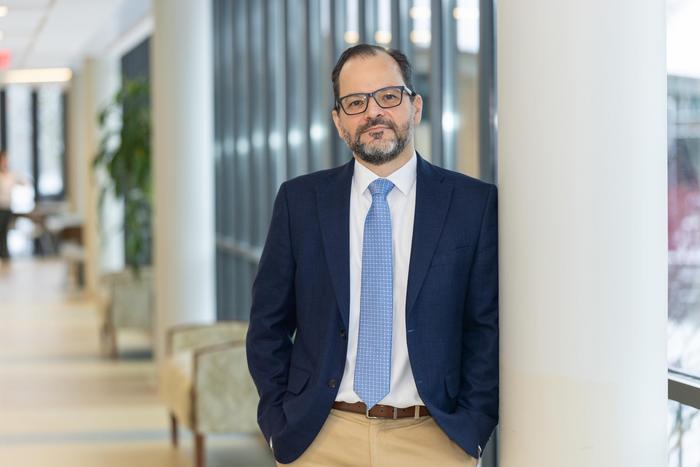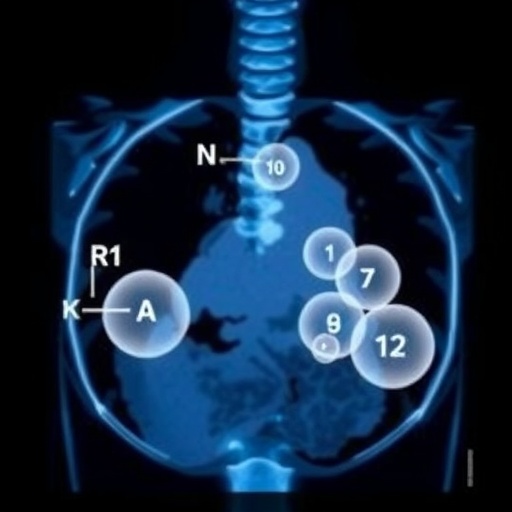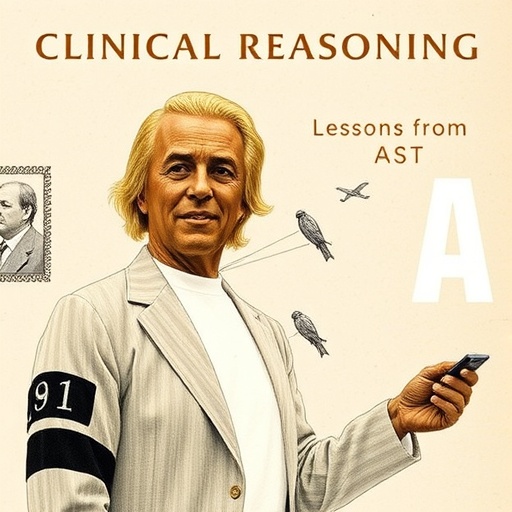
A groundbreaking clinical trial undertaken by researchers at the University of Cincinnati’s Lindner Center of HOPE is investigating the innovative use of noninvasive electrical stimulation of the spinal cord as a potential treatment for major depressive disorder (MDD). The study, led by Dr. Francisco Romo-Nava, MD, PhD, marks a significant advancement in the quest to understand and treat psychiatric disorders. Funded by a generous grant of approximately $3.4 million from the National Institute of Mental Health, this two-phased trial aims to explore the intricate interplay between brain and body communication in relation to mood disorders.
Dr. Romo-Nava’s exploration into how neural connectivity between the brain and body can influence psychiatric conditions is at the forefront of this research. His hypothesis posits that disconnections or overloads in this communication pathway may contribute to various mood disorders, including depression. By conceptualizing the connection between the two systems, Romo-Nava emphasizes the crucial need to address the brain-body interaction. His work suggests that symptoms observed in mood disorders often arise from what can be described as disruptions in the regulatory network linking the two.
The spinal cord plays a pivotal role in transmitting information from the body to the brain, particularly regarding emotional experiences. Building on this understanding, Romo-Nava hypothesizes that a potential underlying factor contributing to MDD could be an overload of information along these neural pathways, akin to a traffic jam on a congested highway. This emerging perspective is reshaping how medical practitioners view mental health, advocating for an integrated approach to diagnosing and treating psychiatric disorders by considering both neurological and physiological phenomena.
Collaborating with the University of Cincinnati’s Office of Innovation, Romo-Nava secured a patent in 2020 for a pioneering method of noninvasive spinal cord electrical stimulation. This approach aims to modulate the interaction between brain and body and offers a new avenue for treating psychiatric disorders. Preliminary results from a pilot clinical trial demonstrated that this method was feasible and well-tolerated, suggesting real therapeutic potential in alleviating depressive symptoms. Herein lies the promise of a noninvasive technique that steps away from traditional, more invasive treatments.
Romo-Nava articulates that the proposed noninvasive spinal cord stimulation could serve to “decrease the noise” associated with physical signals that influence mood. By inhibiting excessive signaling, the study posits that it may become possible to reroute physiological responses and restore balance in the brain-body network. This innovative perspective emphasizes the importance of understanding both neurological impulses and physical sensations that contribute to the overall clinical picture of depression.
While the pilot study yielded encouraging indications, it did not elucidate the specific mechanisms by which spinal cord stimulation elicits its effects. To fill this void, the current study aims to explore the modulation of spinal interceptive pathways—nerve pathways that are crucial for processing bodily signals. Under Dr. Romo-Nava’s guidance, the research team aims to evaluate how spinal cord stimulation affects these pathways, with particular focus on A Delta and C fibers that play essential roles in sensory perception.
To investigate this, the initial phase of the study will employ an innovative methodology involving laser stimulation directed at a participant’s foot. This procedure penetrates the layer of skin where A Delta and C fibers are concentrated. The signal generated by the laser travels through the spinal cord into the brain, where it can be measured using an electroencephalogram (EEG). By analyzing the response patterns of the laser-evoked potentials, researchers anticipate gaining critical insights into the efficacy of spinal cord stimulation.
Dr. Romo-Nava adds a layer of complexity to the study by assessing various dosages of electrical stimulation. This aspect of the research aims to uncover whether increased amperage corresponds to enhanced therapeutic effect. It is noteworthy that even the strongest dosages administered in this study are carefully calibrated to avoid tissue damage, ensuring participant safety throughout the research process.
The first phase of the trial will enroll 67 participants who will receive both varying doses of stimulation and placebo treatments over a span of five weeks. The primary aim is to determine the impact of these interventions on the laser-evoked potentials, while also recording critical data concerning both safety and tolerability. This methodical approach enables a balanced evaluation, prioritizing participant well-being alongside scientific inquiry.
Importantly, should the results from this initial phase yield no significant findings regarding the effectiveness of stimulation on spinal interceptive pathways, the study will conclude at that juncture. Alternatively, if the data proves supportive, the research team plans to transition into a more comprehensive second phase. This subsequent phase will adopt a double-blinded, randomized controlled trial design to further evaluate the efficacy of spinal cord stimulation in treating depressive symptoms among approximately 80 participants.
As this innovative two-phase mechanism unfolds, it encompasses both early-stage testing and rigorous scientific validation of a novel intervention in the field of psychiatric research. Dr. Romo-Nava expresses optimism surrounding the potential of these findings, suggesting they may advance the understanding of psychiatric disorders and the brain’s multifaceted interactions with the body. This research journey, spearheaded by Dr. Romo-Nava and colleagues, marks a significant leap into relatively uncharted territory—one that could potentially reshape the standard approaches toward managing mental health.
If successful, the implications of this research extend far beyond the immediate clinical applications, venturing into the philosophical realms of how mental health should be conceptualized. If noninvasive spinal stimulation is established as both safe and effective, it could fundamentally alter paradigms around how symptoms of psychiatric disorders are understood and treated in clinical settings. The narrative surrounding depression might evolve to encapsulate deeper complexities, presenting the brain not merely as a standalone organ but as an integral part of a broader system of interactions between mental, physical, and emotional health.
Overall, the excitement around this clinical trial reflects a collective hope for transformative change in how psychiatric disorders are perceived and managed. Dr. Romo-Nava and his research associates stand at the forefront of a promising avenue of exploration poised to enhance the lives of countless individuals battling depression and similar disorders, offering a glimpse into a future where innovative therapies can effectively bridge the gaps between brain and body for healing.
Subject of Research: Noninvasive spinal cord electrical stimulation for treating major depressive disorder
Article Title: Noninvasive Spinal Cord Stimulation: A New Frontier in Treating Major Depressive Disorder
News Publication Date: October 2023
Web References: Link to Study
References: National Institute of Mental Health
Image Credits: Photo/Andrew Higley/UC Marketing + Brand
Keywords: Depression, Mental Health, Clinical Trials, Noninvasive Therapy, Spinal Cord Stimulation, Brain-Body Interaction, Psychiatric Disorders, Therapeutic Innovations.
Tags: brain-body communication and mood disordersbrain-body interaction in psychiatryDr. Francisco Romo-Nava researchinnovative treatments for major depressive disorderNational Institute of Mental Health fundingneural connectivity and depressionnoninvasive electrical stimulation researchnovel approaches to major depressive disorder treatmentpsychiatric disorders treatment advancementsregulatory network disruptions in mood disordersspinal cord stimulation for depressionUniversity of Cincinnati clinical trial





